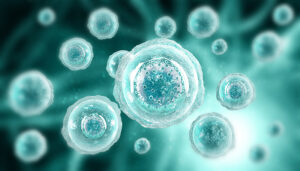Here’s to Good Health
Factors underlying the aging process
By Eva Briggs, M.D.
 I think I’m not alone in wishing for not just a long lifespan, but a long healthspan.
I think I’m not alone in wishing for not just a long lifespan, but a long healthspan.
Aging is inevitable, but to stay healthy as long as possible would be ideal.
I recently read an article that explains a number of the biological factors underlying the aging process. Since my love of biology is what led me to pursue a career in medicine, I’ll try to explain and describe them in this column.
• Senescent cells. Most of the cells in your body divide to form new cells. Old cells typically die when they are no longer functional. Over the years, some cells lose the ability to divide but don’t die. These senescent cells build up in the body and secrete substances that cause inflammation, interfere with tissue function and promote age-related diseases.
• Telomere erosion. DNA is the molecule inside cells that provides the instructions the cell uses to manufacture the proteins that allow metabolism and growth. DNA molecules exist in long strands. At each end of the DNA molecule is a section that serves as a protective cap to prevent one chromosome from merging with another. This end cap is called a telomere. Over time the telomeres wear away, eventually losing their protective abilities. When this happens, the cell can’t divide and becomes senescent.
• DNA damage. Because our cells contain so much DNA, it’s inevitable that the DNA can become damaged each time a cell reproduces itself. Healthy cells have mechanisms to repair the damage so that the error won’t spread and cause diseases such as cancer. With time cells lose the ability to repair DNA damage.
• Epigenetics. Your body has chemicals that turn sections of DNA on or off as needed. These chemicals change over time, affecting the rate of aging. Epigenetic changes can be passed from parent to child. Environmental factors such as diet, exercise and psychological stress also contribute to epigenetic changes.
• Mitochondrial dysfunction. Mitochondria are structures inside each cell that produce energy from nutrients needed for metabolic processes. As mitochondria age, they become inefficient, failing to provide the cell with the energy to do its job.
• Protein degradation. Proteins are complex molecules needed for cells to function. Older cells may be unable to maintain healthy proteins. Damaged non functional proteins accumulate. Parkinson’s and Alzheimer’s are two diseases felt to arise from the buildup of damaged proteins.
• Cellular repair. When cells lose the ability to repair the wear and tear to their internal structures, toxic wastes pile up. Think of what would happen if you couldn’t take your trash out. It makes a mess.
• Worn out stem cells. Stem cells are cells that have the ability to grow into different types of cells to repair and replace damaged cells. When they wear out, organs and tissues degenerate. This especially affects the skin, immune system, and blood.
• Altered gut microbiome. Your intestines host a community of microorganisms. Changes such as loss of beneficial bacteria and an increase in detrimental species contribute to a wide variety of processes: inflammation, immune function, metabolic health and more.
• Endocrine changes. Hormones send signals between different organs. Various changes contribute to aging. For example, decreased growth hormone leads to weaker muscles and decreased melatonin interferes with the sleep cycle.
The good news is that by understanding how we age at the cellular level, scientists are studying ways to slow or reverse these processes. The goal is to enable us to stay healthier longer.

